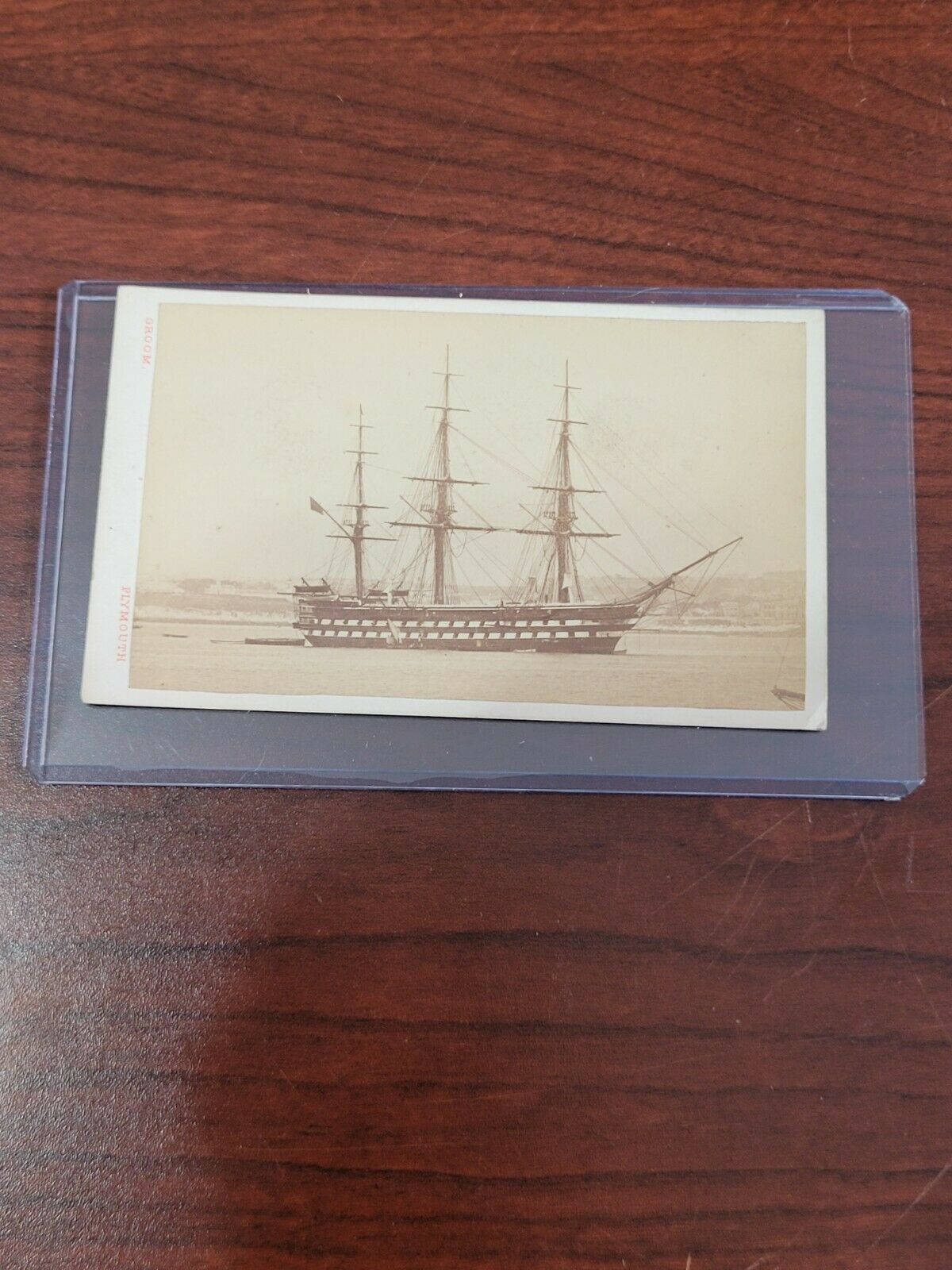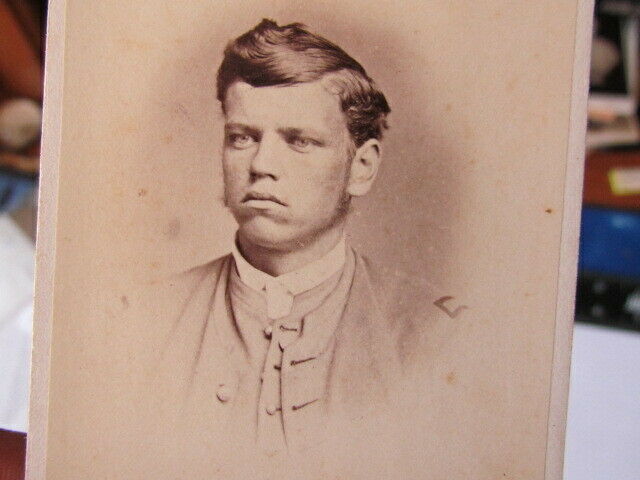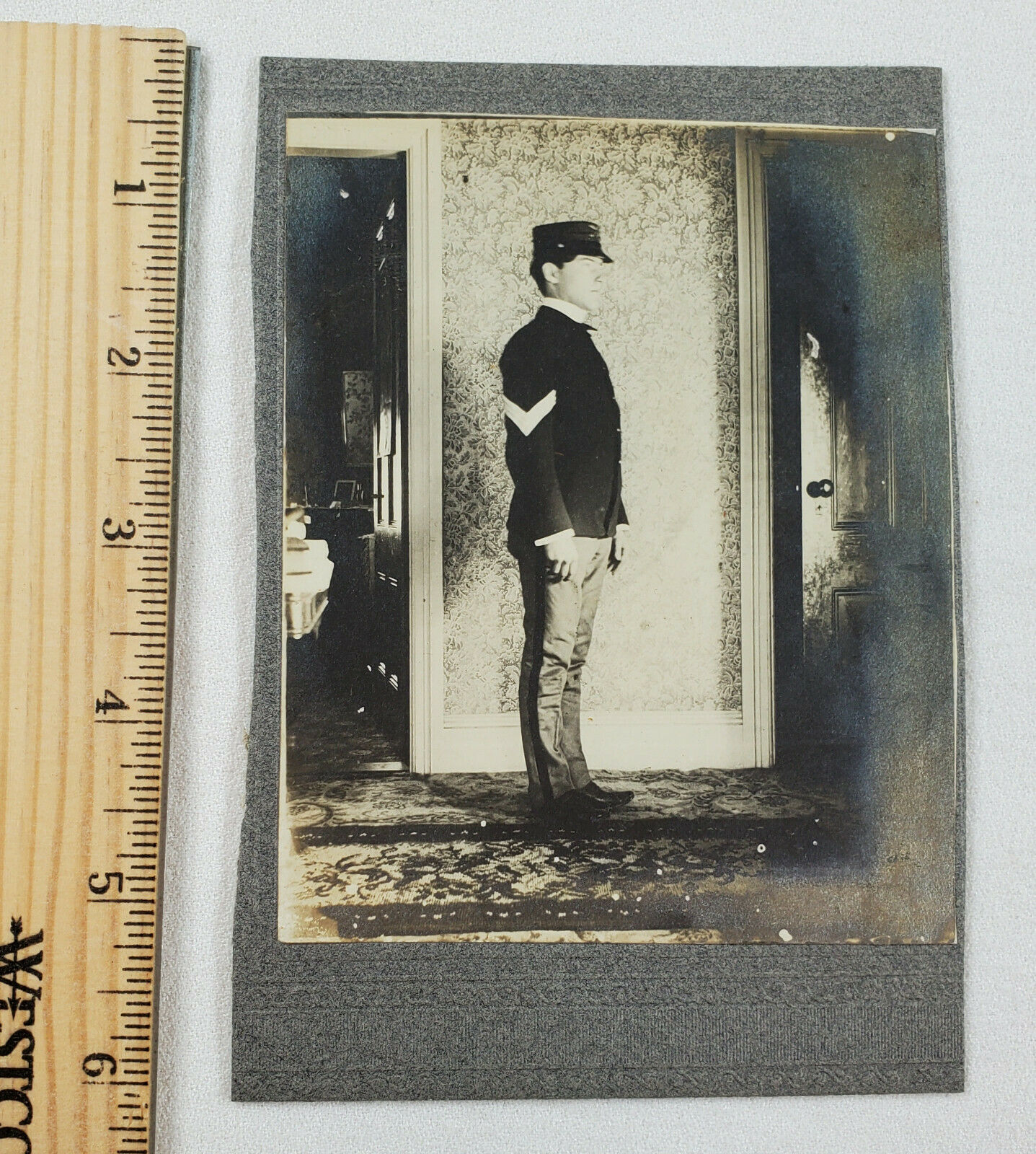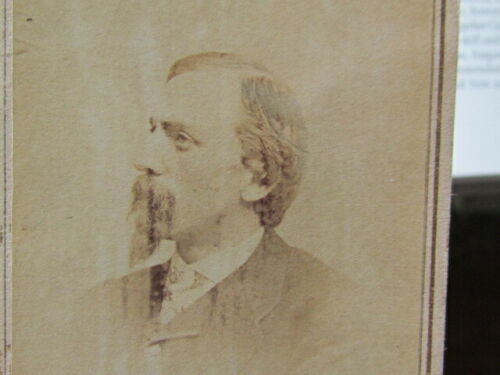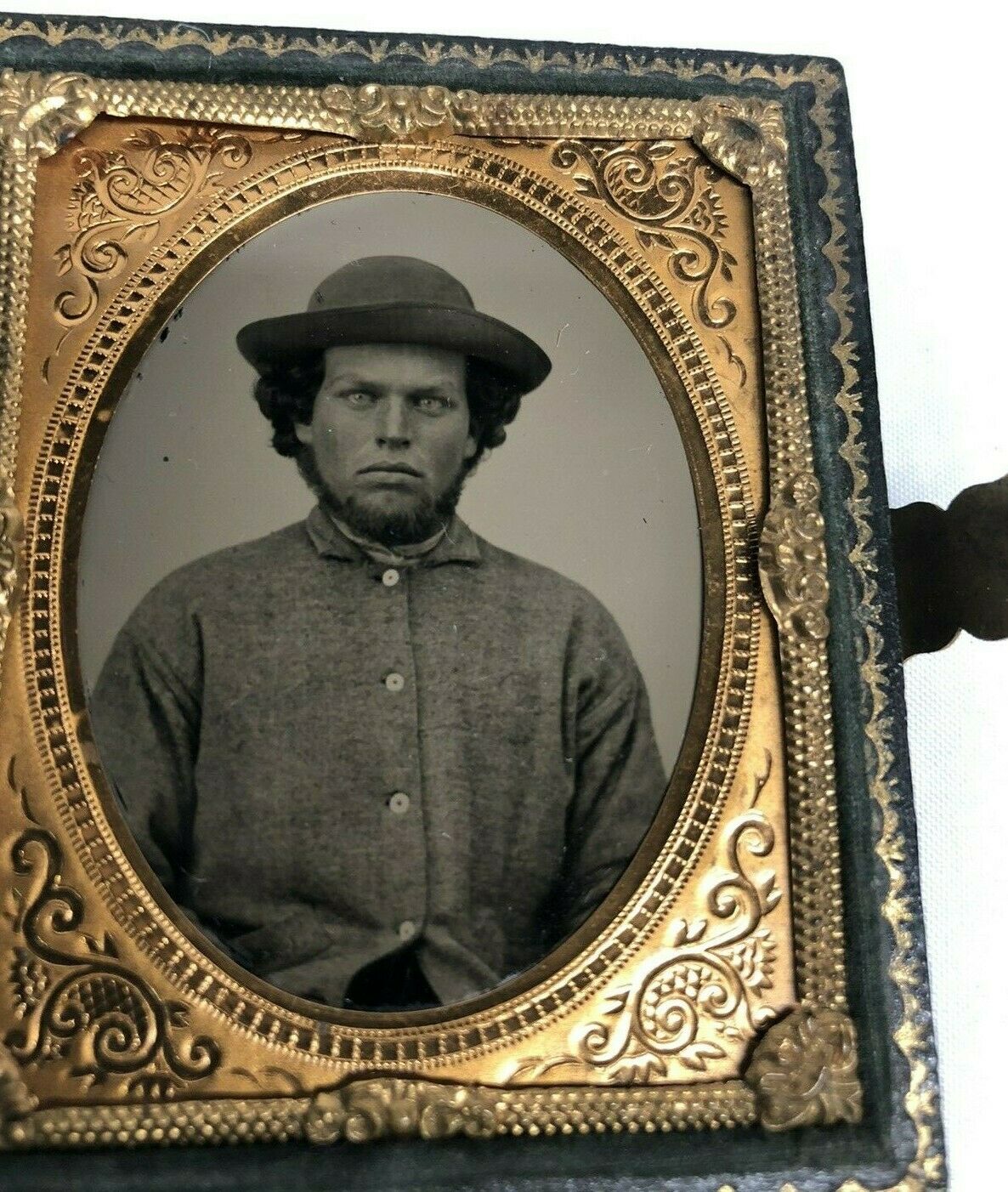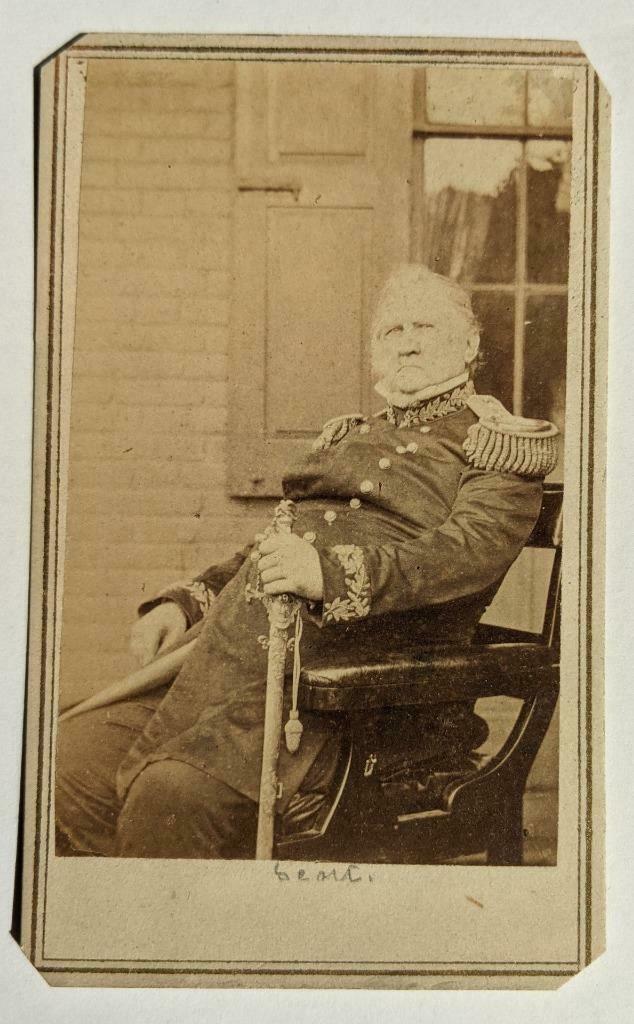-40%
Civil War CDV Photo Union General Nathaniel Prentiss Banks with Hat Photo
$ 60.72
- Description
- Size Guide
Description
Original CDV of Civil War Union General Nathaniel P. Banks photographed by Charles Fredericks, New York. Great photo with the swashbuckling hat not many generals appear to have worn hats in the portraits. Maybe they considered it impolite? Studio stamp on back and handwritten name. This CDV was part of vintage album including many CDVs of Union Army Generals (some signed), Abraham Lincoln, members of Lincoln's cabinet, Robert E. Lee (signed), politicians and a few notable writers and abolitionists during CW. The album was not salvageable but thankfully the photos were. Measures approx. 2 1/2 x 3 7/8". Condition is good there is foxing. This will ship fast and FREE within protective sleeve. Please contact us any questions we try our best and follow our store we focus on rare and unique.About Banks (1816-1894):
'Of the 14 Union officers who received the Thanks of Congress during the Civil War, Nathaniel P. Banks was the least entitled. Serving under five different party labels during his political career, he rose from a childhood job in a cotton mill in his native Massachusetts-which earned him the nickname "Bobbin Boy"-to become speaker of the state legislature's lower house, U.S. congressman and just before the war, governor. As a political appointee, he was named a major general of volunteers. His field career was rather dismal but his appointment served its purpose in rallying support for the war effort. His assignments included: major general, usv (May 16, 1861); commanding division, Department of Annapolis (ca. May - June 11, 1861); commanding the department (June 11 - July 19,1861); commanding Department of the Shenandoah (July 25 - August 17, 1861); commanding division, Military District of the Potomac (August 17 - October 3, 1861); commanding division, Army of the Potomac (October 3,1861 - March 13, 1862); commanding 5th Corps, Army of the Potomac (March 13 - April 4, 1862); again commanding Department of the Shenandoah (April 4 - June 26, 1862); commanding 2nd Corps, Army of Virginia (June 26 - September 4, 1862); commanding Military District of Washington, Army of the Potomac (September 7 - October 27, 1862); commanding 19th Corps, Department of the Gulf (December 16, 1862 - August 20, 1863); commanding the department (December 17, 1862-September 23, 1864 and April 22 - June 3, 1865). With no prior military experience, he was in divisional and departmental command near Washington early in the war. In the Shenandoah Valley he was routed by Stonewall Jackson and due to his tremendous loss of supplies was dubbed "Commissary Banks" by the Confederates. As part of Pope's army, he was again defeated at Cedar Mountain by Jackson and was at 2nd Bull Run. After a brief stint in the capital's defenses he went to New Orleans to replace Benjamin F. Butler. His operations against Port Hudson met with several bloody repulses but the place eventually fell after the surrender of Vicksburg made it untenable. For obvious political reasons, Congress awarded a resolution of thanks to one of its former members. Remaining in the Gulf area, he led the dismal Red River Campaign of 1864 and was then for a time without a command. With hostilities virtually over, be was returned to command but was mustered out on August 24, 1865. Continuing his political career, until 1890, he served in Congress, the state senate, and as a U.S. Marshal. Congress awarded him a ,200 annual pension.'
(Source: "Who Was Who In The Civil War" by Stewart Sifakis)


